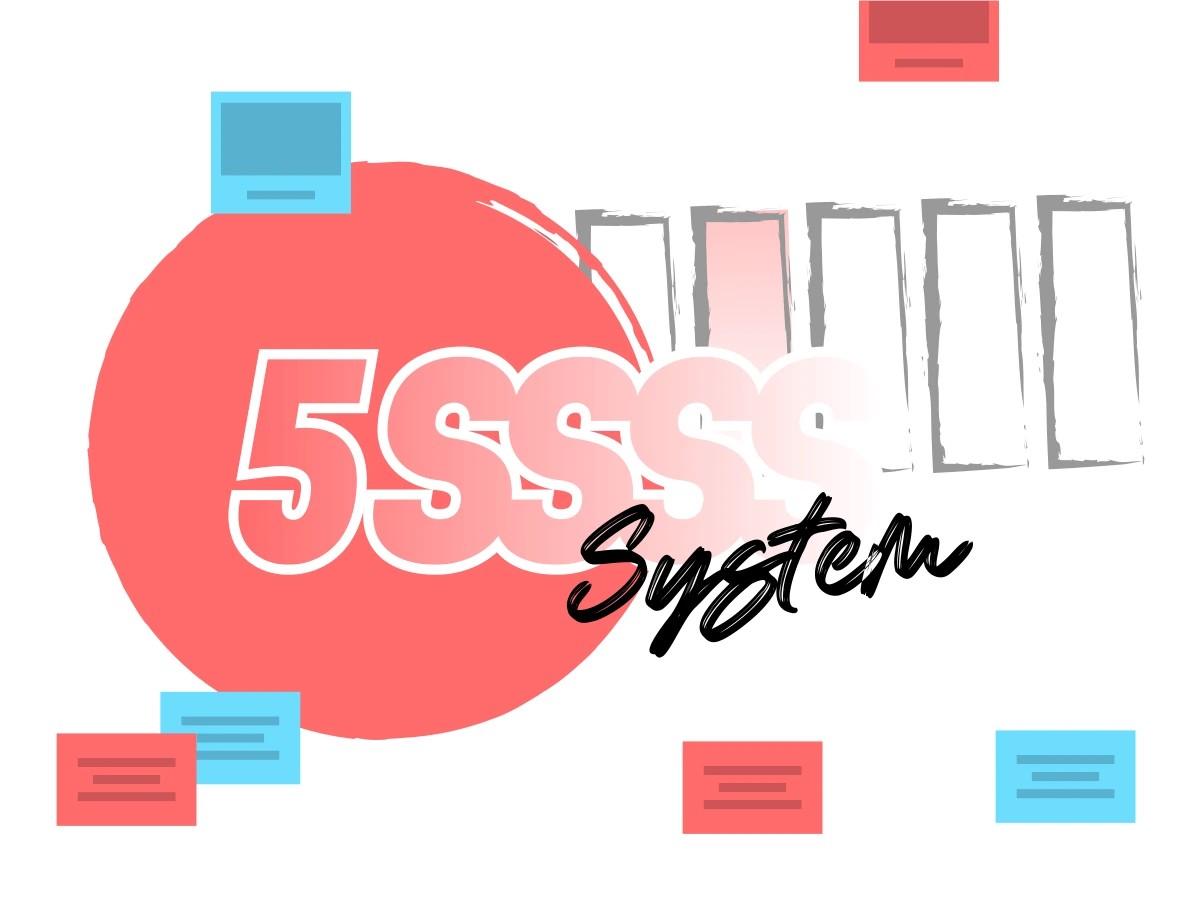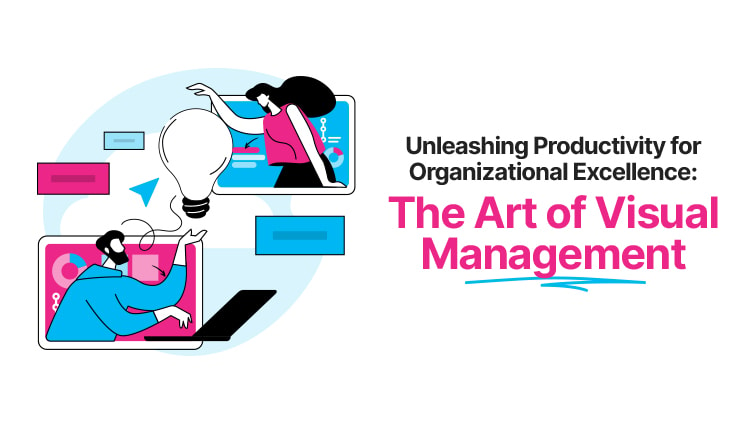3 examples of successful project management with 5S methodology
There are many methodologies in the world of project management. They have evolved over time according to changes in the way we live and work, as well as advances in technology. Project management is not just about creating tasks, objectives, and timelines. The success of your project also depends on the environment in which you are working.

With this ready-to-use 5S template, use a proven continuous improvement method to increase your team’s performance and well-being.

The 5S methodology is a system for organizing and maintaining a clean, efficient, and productive work environment. It has its origins in Japanese manufacturing practices, and the five words beginning with S are originally seiri, seiton, seiso, seiketsu, and shitsuke. These have been translated as sort, set, shine, standardize and sustain – giving five words beginning with S in English as well.
We will take a look at some examples of the ways in which this project management methodology can be used and how this efficient method can be of benefit to project teams.
What is 5S methodology in project management?
The 5S methodology takes a project workspace through five steps, in order. These are:
1. Sort
The first step is to sort and separate items in your workspace. You need to identify what is necessary for your work process so you can remove anything that is superfluous. If you can declutter your workspace this will help to eliminate any items that could hinder productivity or cause confusion.
2. Set (in order)
Once you have removed any unnecessary items you can arrange and organize the things that you need in a way that is systematic and logical. This could mean finding the right homes for certain tools, equipment, and materials so that they are easily accessible when they are needed. Things that need to be stored should be clearly labelled. Using visual cues can also help when you need to locate and return items.
3. Shine
This step relates to ensuring that your workspace is kept clean and is properly maintained. It is always preferable to be working in a clean and safe environment, both for health reasons and for mental clarity. Team members are encouraged to take responsibility for the cleanliness of their workspace and to establish protocols to maintain it.
4. Standardize
In order to maintain the steps you have already taken, you will need to establish standardized procedures and practices. With clear guidelines and instructions for maintaining an organized workspace you are more likely to keep it that way. If you can document procedures, create visual aids, and provide training to ensure consistency, you will help enable team members to more easily understand and follow your working standards.
5. Sustain
Once you have made all these improvements, you need to make sure you focus on sustaining them. You can reinforce the 5S principles by continuously monitoring and reviewing your workspace. Employee participation, engagement, and ownership of the process should be encouraged.
How does 5S methodology improve your project outcomes?
We all know how difficult it can be to work in a dirty or disorganised environment. If you are constantly searching for something you need, or not able to think straight because there is so much ‘stuff’ around you, it can be hard to do your job properly.
5S methodology promotes efficiency, safety, and productivity in project management. It helps to eliminate waste, improve organization, and create a more visual workplace. This can help minimize errors, reduce delays, and improve employee engagement and productivity.
Teams can focus on their tasks more effectively in a clean and organized work environment than they can in a chaotic, disorganized one.
What benefits 5S project management methodologies can bring in real life
Reducing clutter to increase productivity
Have you ever worked in a messy office? One with piles of papers and folders stacked up over all the available surfaces? Where you had to hunt for five minutes just to find a stapler, or a pad to write down a telephone message?
Times have changed, and many offices have reduced the amount of paper in their day-to-day business. Maybe there are fewer piles of paper and documents are filed virtually. Perhaps you rarely need a stapler or to take a message. These are the days of online documents, remote working, and hot desking.
However, this does not mean that everyone is working in a spotless environment, free of clutter and waste. Available spaces in a messy environment will be covered with something. That could be out-of-date stock, personal items like discarded layers of clothing, food, or shopping. The bits and pieces of everyday work and life items that can, if no one is paying attention, quickly become problematic.
There is relationship between a cluttered environment and productivity. A Harvard Business Review article talks about how clutter in our work environment can be just as disruptive as in our homes: Princeton University Neuroscience Institute research found that ‘constant visual reminders of disorganization drain our cognitive resources and reduce our ability to focus. When participants cleared clutter from their work environment, they were better able to focus and process information, and their productivity increased’.
If you allow your working environment to become cluttered, you can lose sight of what you have and reduce your productivity levels. This can lead to a waste of resources. If you can’t find a stapler easily – or any other item - you might just order another one. Perhaps there are already several scattered around the office, all in places you would not think to look or cannot easily access.
Reducing costs
Therefore, applying 5S methodology to your workspace can help reduce costs. Ordering extra items of stationery and office equipment, for example, is less likely. Taking the time to go through this five-step process and applying it methodically can boost efficiency and reduce your operational costs.
This is true in an office environment and particularly important in a retail space where we are not just talking about having too many staplers. If your stock is all over the place and you don’t know what you have, it can lead to huge inefficiencies. Time wasted searching for products, things going out of date and becoming unsaleable, stock taking up space that could be used for other, more profitable purposes: there are many ways project teams can benefit from a project management mindset, and 5S methodology in particular.

An all-in-one platform in tune with your organization is the key to achieving economies of scale on many levels. Discover 6 ways to get there!

3 examples of 5S methodologies improving outcomes
5S methodology in manufacturing
5S methodology originated in the manufacturing industry. It is part of the Toyota Production System (TPS) which was developed in the 1940s. It puts a lot of emphasis on visual management, and this is particularly helpful in manufacturing.
It can help companies optimize operations by reducing waste, increasing productivity, improving their workplace safety, and delivering higher-quality products. By implementing and sustaining the 5S principles, companies can create a manufacturing environment that is more efficient and effective.
If you have a factory process that requires different tools, equipment, and components, making your product can be complicated and teamwork can be challenging.
A cluttered environment can make it difficult to find the right components at the right time. If something breaks down and halts the production line it can be extremely costly: you need to be able to find and replace any broken equipment as quickly as possible. If you have component parts that need to be replaced but they could be in any number of boxes, where do you start?
If your factory is cluttered and untidy, your workers may not be able to find the tools they need. If they have to hunt through unnecessary items or the equipment required is not ordered in a logical and easily accessible manner, this can waste time. You can more easily end up with duplicate tools or missing items, as well as unhappy workers.
Sorting out your workspace to make it more organized and streamlined should lead to improved efficiency and better teamwork. Setting things in order will help workers become more productive. Visual management techniques, using things like labels, color-coding, and designated storage areas, can help employees to locate and retrieve required tools or components more quickly. This will reduce downtime and enable workers to complete more tasks in less time.
We all know how important safety in the workplace is, especially in a factory setting where there may be dangerous processes or machinery. Regularly cleaning and maintaining a workspace is paramount, both for health and safety and to reduce the chances of machinery and other equipment breaking down.
A clean, well-maintained environment reduces the chances of this happening as well as making accidents less likely. It should result in fewer disruptions. And a production line needs to produce the same product to the same standard each time so standardizing the process will lead to better outcomes.
Toyota used 5S methodology in all its forms and TPS has helped Toyota streamline operations, reduce waste, enhance quality, increase customer satisfaction, and maintain a strong market position. Other large companies including Harley Davidson also employ 5S principles to their advantage, and they can be applied to businesses of any scale.
Improving safety and patient outcomes in medical environments
As we know, 5S methodology can be applied in all settings: the healthcare sector is no exception. By implementing 5S methodology in a hospital, for example, there are numerous benefits to be had. These benefits do not just apply to the staff working there and their own workspace. They can also improve patient outcomes.
The 5S method can help streamline processes, reduce waste, and improve workflow. This can result in improved efficiency and reduced wait times for patients. By organizing and de-cluttering work areas you can minimize the risk of accidents, both for staff and patients.
Ensuring that all areas are clean and well-maintained can also reduce the risk of infection and germs spreading. This is particularly important in a hospital environment. With well-organized work areas and standardized processes, staff can spend less time searching for supplies or equipment, and this will allow them to spend more time on patient care.
Standardizing procedures and reducing the potential for errors can lead to higher quality patient care, improved patient satisfaction, and providing better outcomes.
There have been various studies on the use of project management methodologies in healthcare, particularly focusing on the lean management system, all of which have shown benefits. One study focusing on just 5S in a healthcare setting ‘identified that the 5S management method improved the quality of services, and the improvements were rooted in three dimensions: efficiency, patient-centeredness, and safety’.
Tools for 5S project management and improving your workspace
As we have seen, 5S methodology offers valuable benefits in terms of organizing and maintaining a productive and efficient work environment. There are tools that can help you with 5S project management: for example, an online whiteboard is a visual management tool that provides a collaborative platform for your team, whether they are based remotely or in the office.
Visual management techniques offer a clear and intuitive way to represent project information. By using an online whiteboard, readymade templates specifically designed for project management, including 5S methodology, teams can create visual workflows, simplify complex concepts, and facilitate informed decision-making.
The option to use readymade templates for all types of project management techniques enables your teams to find the solutions they are looking for. Our templates offer pre-defined structures, layouts, and frameworks for different project phases or methodologies. This can help teams can save time, maintain consistency, and ensure that crucial project elements are not overlooked.
A virtual whiteboard serves as a centralized hub for all your project-related information, minimizing the risk of misunderstandings and inefficiencies. Project teams can streamline their workflows and improve communication, teamwork, and overall efficiency. By constantly making small improvements to their working environment, project teams are likely to be more engaged and efficient.
Why not check out our resources to see how our collaborative tools and templates can help your business work better?
Unlock your teamwork potential
For free, make your first steps to top-tier work efficiency with the Klaxoon Work Collaboration Platform.
